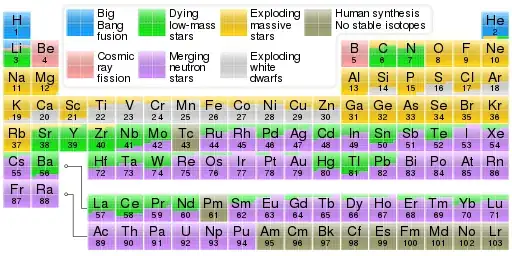The star that is studied in the paper that you refer to is a very old, very metal-poor "Uranium giant". This is an evolved star with a very deep convective envelope.
The Uranium and Thorium that are seen in the atmosphere of the star were not produced in the star. They would have been produced, via the r-process neutron capture mechanism, in the supernova explosion of an earlier, massive star. These elements are notable because elements heavier than lead must have been produced in supernovae.
The U and Th in the supernova ejecta (along with full range of other heavy elements in various proportions) were mixed into the material that formed the star we are talking about here. Those elements would have been present in the core and throughout the whole of the star.
The paper you reference attempts to find the lead content of the star. Lead can be produced by the s-process inside evolved giant stars, by slow neutron capture onto existing iron-peak nuclei. However, in a very metal-poor star, this is likely to be ineffective, and/or has not had time to occur in previous stellar generations and the paper argues that the small amount of lead that is found is consistent with the radioactive decay of (some of) the r-process Uranium and Thorium already in the star when it formed. The lead would also be found all the way through to the core of the star.
As an aside, the effectiveness of the s-process in stars that already have some iron in them, means that about half the heavy element abundance of the solar system was created inside stars and not in supernova explosions. The Sun does contain most of the iron-peak and stable heavier elements in its core and envelope, but these were not produced in the Sun; they were in the material it was born from.
